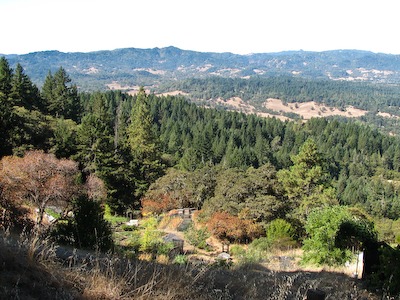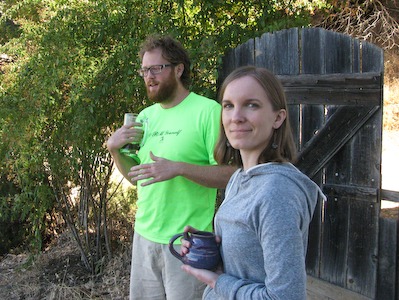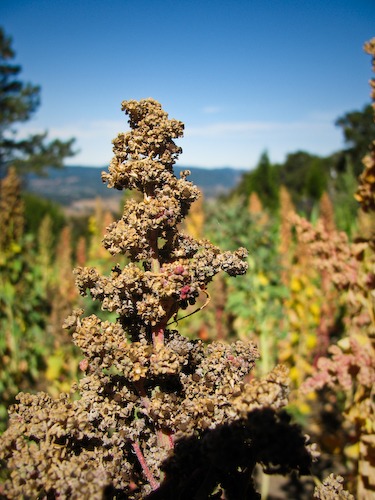Earlier this month Anneliese and I had a chance to visit Ecology Action, in Willits, California.
Ecology Action is the research farm of John Jeavons, author of How to Grow More Vegetables than You Ever Thought Possible on Less Land than You Can Imagine. Given that this book had a huge influence on the way that both Noel and I garden, it was a big deal for me to finally be able to visit the site.
John Jeavons wasn’t available, but another John, who is currently interning with Ecology Action, took time out of his schedule to show us around. The site is hidden among redwood hills and is difficult to find. The view of the mini-farm is spectacular, but the soil is not. Part of the research involves showing whether or not the Bio-Intensive method works in conditions similar to that of small-farmers on marginal soils with little access to outside inputs and large-scale irrigation.
To that end, the goal of the garden is to generate all of its own fertility. This means growing lots of crops as much for the carbon and other biomass that they produce that then goes back into the compost pile as for their food value. At Ecology Action, they follow a 60%-30%-10% model. Sixty percent of the space is devoted to crops that produce a lot of carbon as well as some food, such as quinoa; the seeds are eaten and the stalks go into the compost. Thirty percent of the space is reserved for high calorie root crops and ten percent of bed space is for vegetables.
Grains and grain like crops are an important part of the system that Ecology Action has developed, both as a calorie crop and as a source of carbon for the compost. We saw lots of quinoa.
At the time of our visit, we saw lots of quinoa and amaranth almost ready to harvest. Since this is a research farm, everything that is harvested is weighed and recorded. Signs on the various compost piles showed the ratio of carbon to nitrogen in each pile; later the effects that different blends of compost had on yields would be observed.
Many gardeners have access to outside fertility. Even Noel, who generates almost all of his garden fertility on his property, relies on composted leaves from other parts of the yard not dedicated to food growing to replenish the organic matter. At Ecology Action, the assumption is that the garden must become a source for organic matter, not a sink; the garden must produce more organic matter than it consumes.
A closed-loop fertility cycle is just a small-part of the method presented in How to Grow More Vegetables. Even if you are a city gardener who relies on purchased compost for your fertility, the other raised bed techniques, crop spacing guidelines, and more make the book one of our favorites, and visiting the research farm in person gave me a new appreciation for their methods.



